Abstract
The in vitro activity of S-6123, a synthetic antimicrobial compound of the new oxazolidinone series, was compared with those of other orally administered agents against 328 clinical isolates. The compound was moderately active (MICs, 16 to 64 micrograms/ml) against 90% of staphylococci, nonenterococcal streptococci, and Haemophilus influenzae, including strains resistant to beta-lactam antibiotics. S-6123 was minimally active against enterococci and facultative gram-negative bacilli. Nevertheless, the compound had significant activity in a lethal rat Escherichia coli peritonitis model at serum concentrations of one-tenth the MIC against the infecting organism. The drug demonstrated only bacteriostatic activity against susceptible organisms. Studies to define the mechanism of antibacterial action revealed that S-6123 inhibited ribosomal protein synthesis without inhibiting DNA or RNA synthesis. This compound represents a new series of antibacterial agents not related to any other antibacterial compound of natural or synthetic origin.
Full text
PDF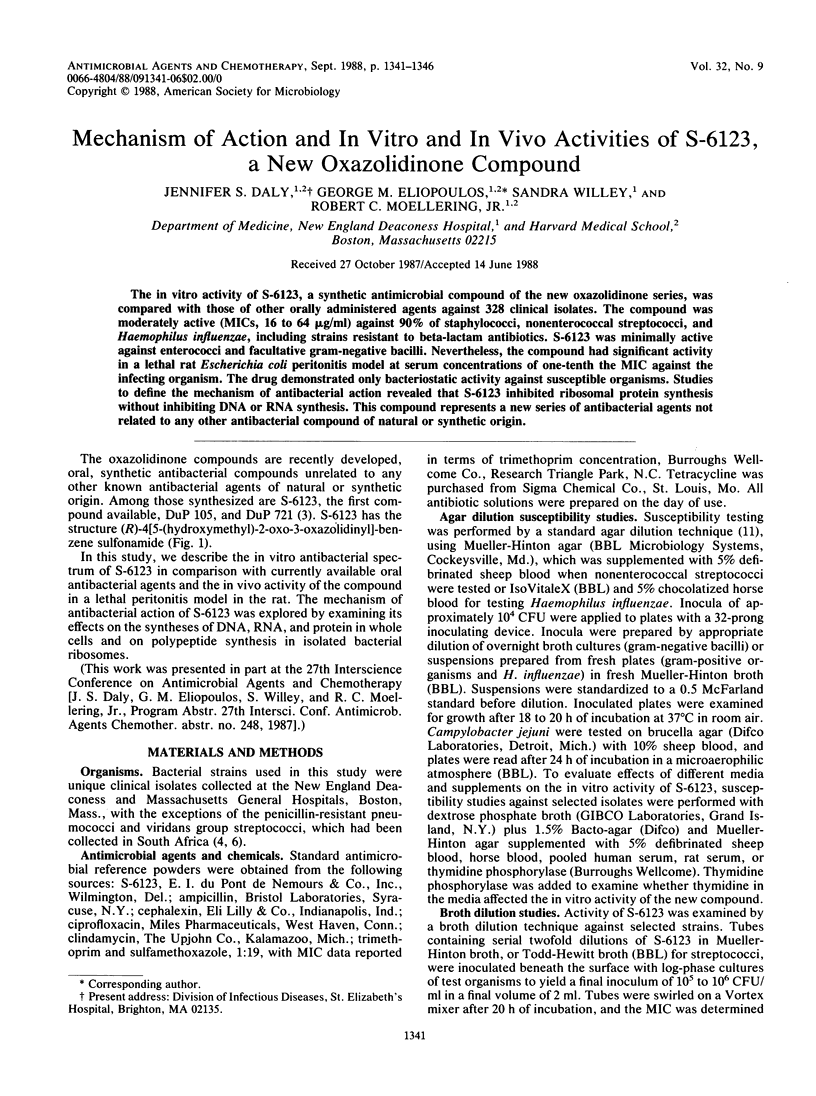
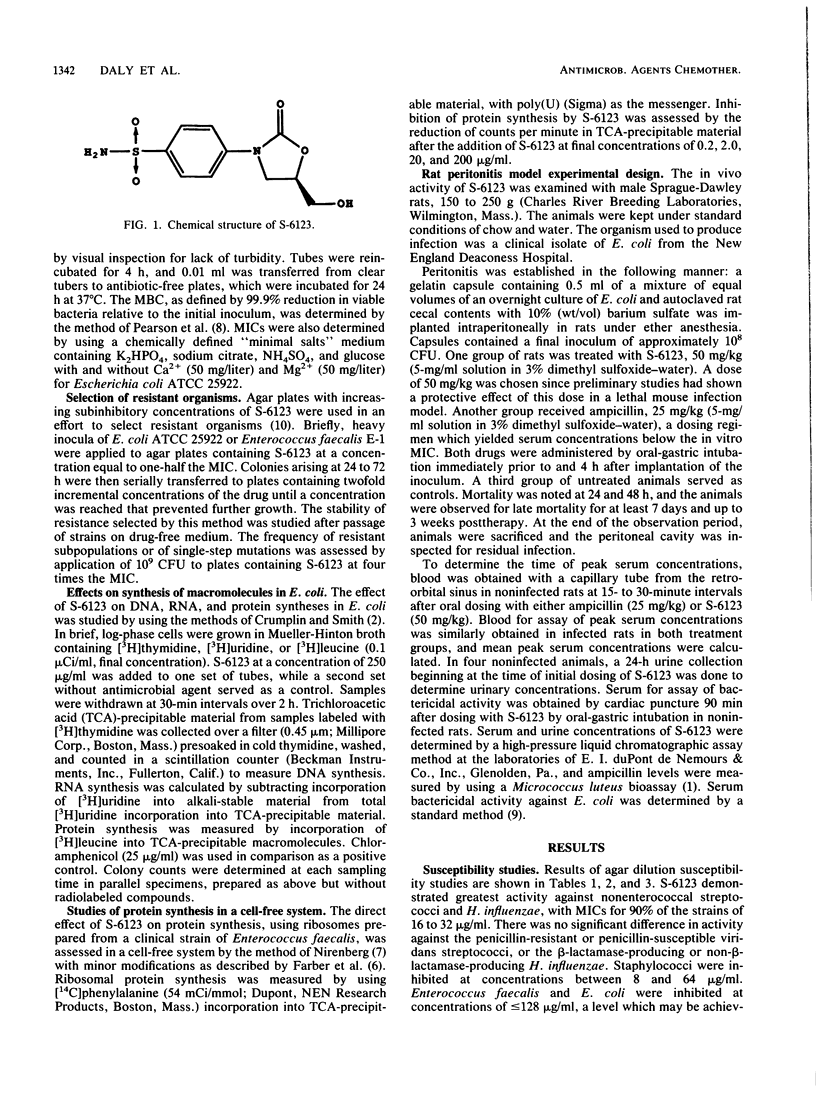
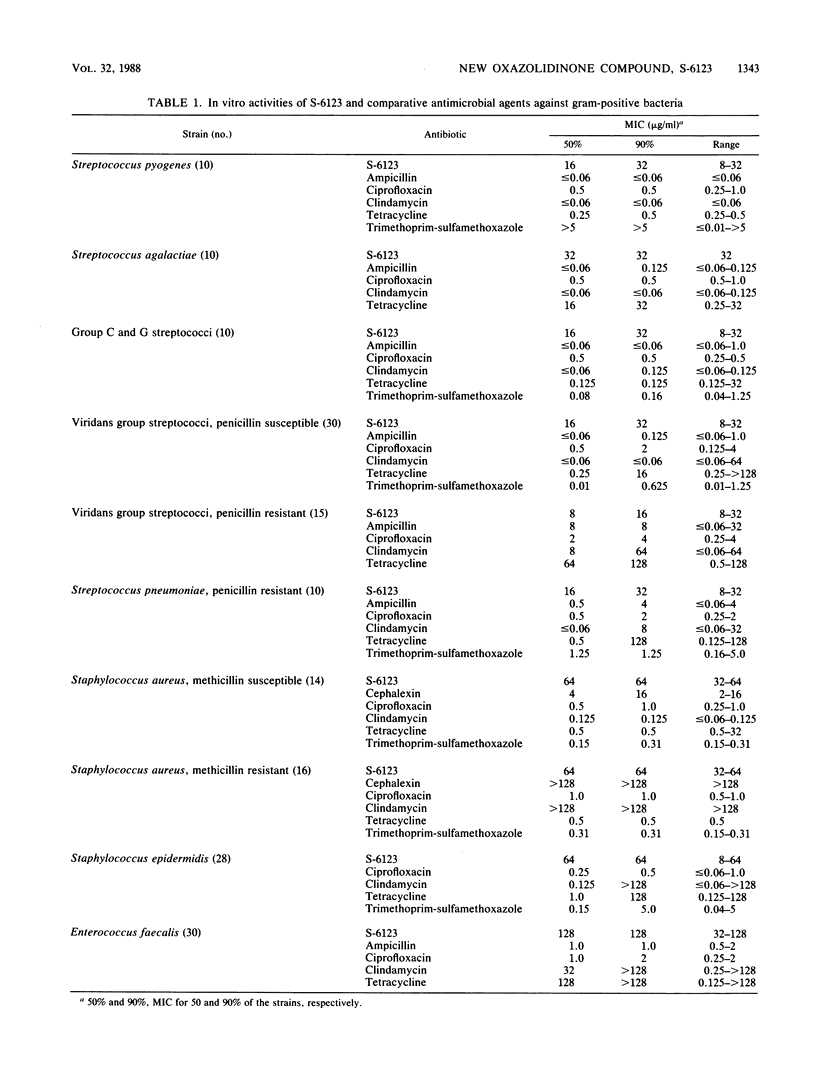
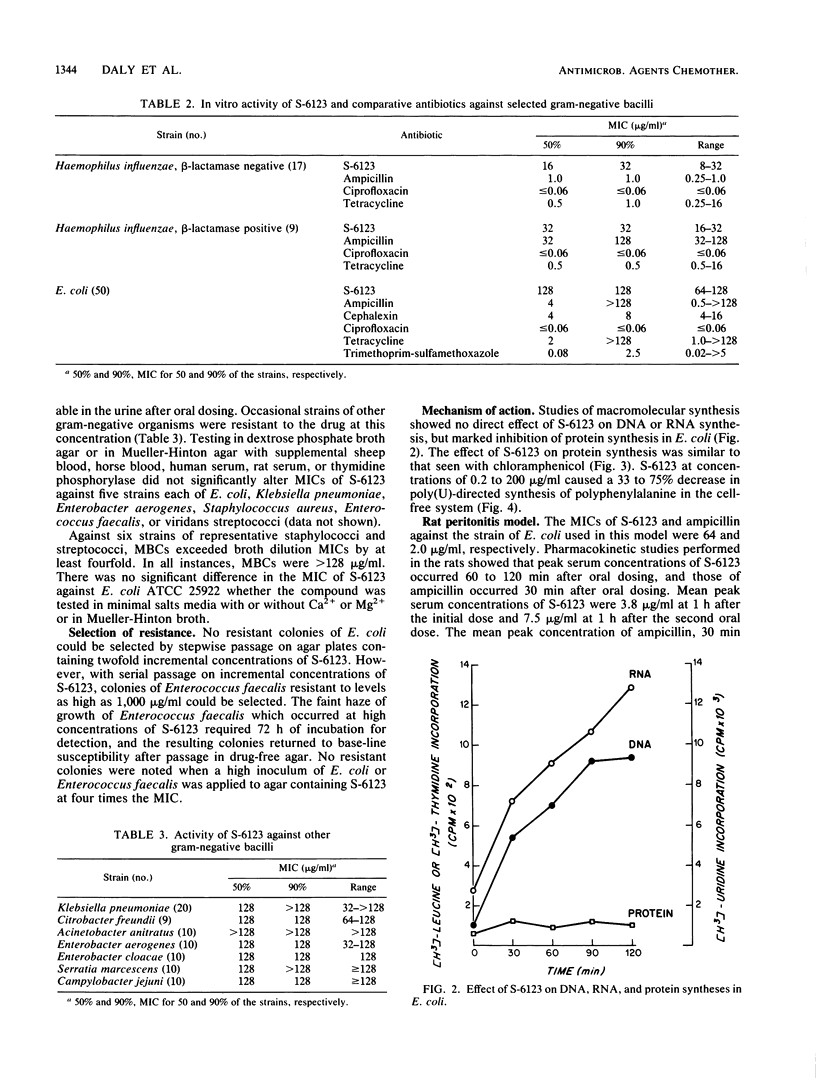
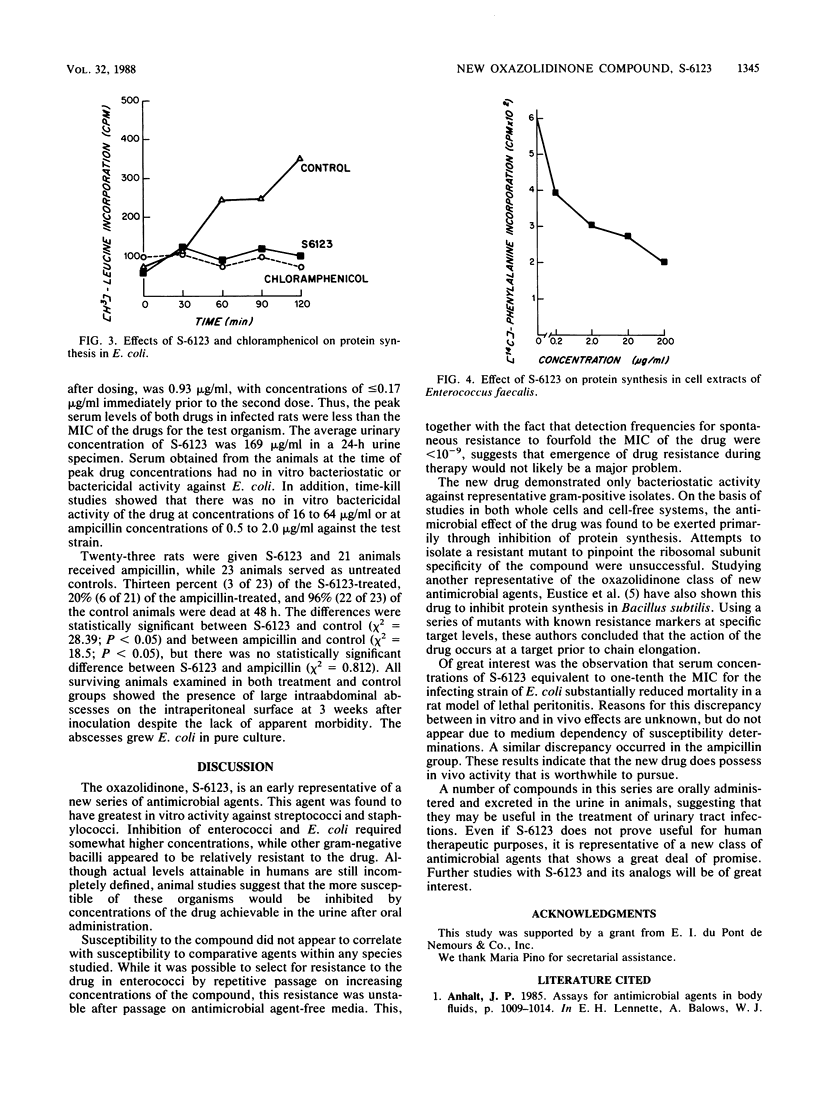
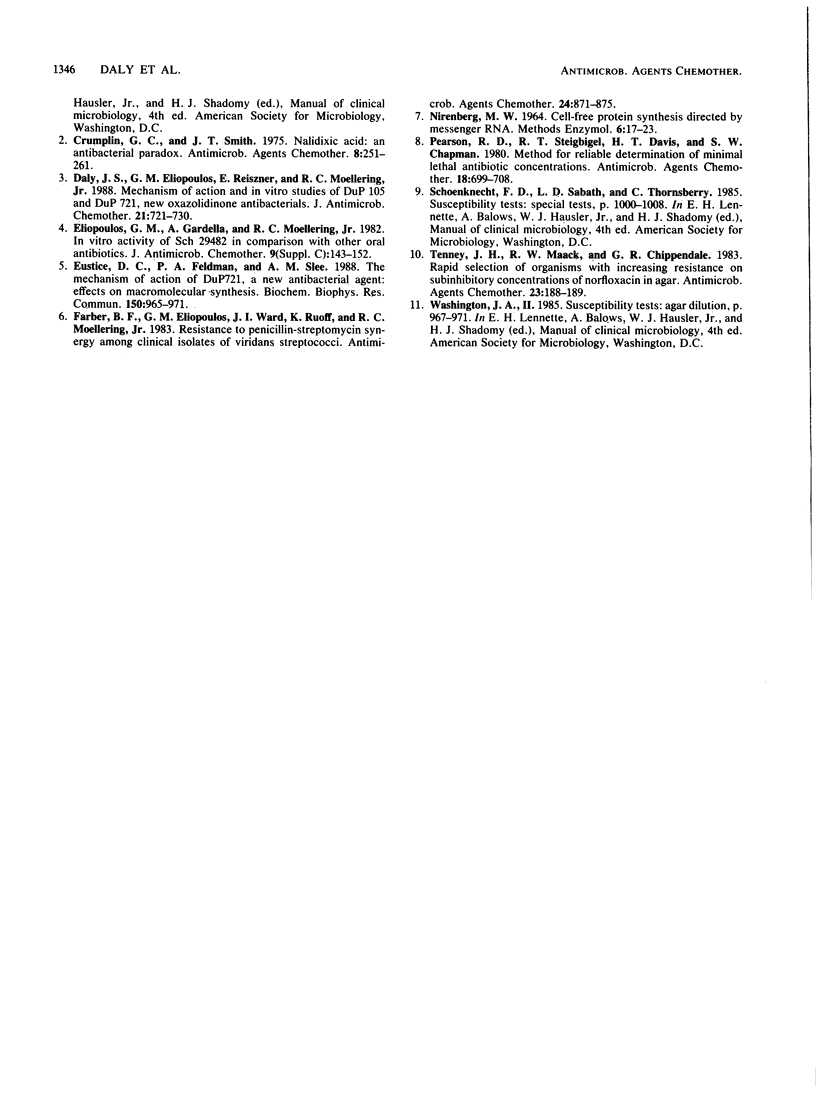
Selected References
These references are in PubMed. This may not be the complete list of references from this article.
- Crumplin G. C., Smith J. T. Nalidixic acid: an antibacterial paradox. Antimicrob Agents Chemother. 1975 Sep;8(3):251–261. doi: 10.1128/aac.8.3.251. [DOI] [PMC free article] [PubMed] [Google Scholar]
- Daly J. S., Eliopoulos G. M., Reiszner E., Moellering R. C., Jr Activity and mechanism of action of DuP 105 and DuP 721, new oxazolidinone compounds. J Antimicrob Chemother. 1988 Jun;21(6):721–730. doi: 10.1093/jac/21.6.721. [DOI] [PubMed] [Google Scholar]
- Eliopoulos G. M., Gardella A., Moellering R. C., Jr In-vitro activity of Sch 29482 in comparison with other oral antibiotics. J Antimicrob Chemother. 1982 Feb;9 (Suppl 100):143–152. doi: 10.1093/jac/9.suppl_c.143. [DOI] [PubMed] [Google Scholar]
- Eustice D. C., Feldman P. A., Slee A. M. The mechanism of action of DuP 721, a new antibacterial agent: effects on macromolecular synthesis. Biochem Biophys Res Commun. 1988 Feb 15;150(3):965–971. doi: 10.1016/0006-291x(88)90723-1. [DOI] [PubMed] [Google Scholar]
- Farber B. F., Eliopoulos G. M., Ward J. I., Ruoff K., Moellering R. C., Jr Resistance to penicillin-streptomycin synergy among clinical isolates of viridans streptococci. Antimicrob Agents Chemother. 1983 Dec;24(6):871–875. doi: 10.1128/aac.24.6.871. [DOI] [PMC free article] [PubMed] [Google Scholar]
- Pearson R. D., Steigbigel R. T., Davis H. T., Chapman S. W. Method of reliable determination of minimal lethal antibiotic concentrations. Antimicrob Agents Chemother. 1980 Nov;18(5):699–708. doi: 10.1128/aac.18.5.699. [DOI] [PMC free article] [PubMed] [Google Scholar]
- Tenney J. H., Maack R. W., Chippendale G. R. Rapid selection of organisms with increasing resistance on subinhibitory concentrations of norfloxacin in agar. Antimicrob Agents Chemother. 1983 Jan;23(1):188–189. doi: 10.1128/aac.23.1.188. [DOI] [PMC free article] [PubMed] [Google Scholar]


